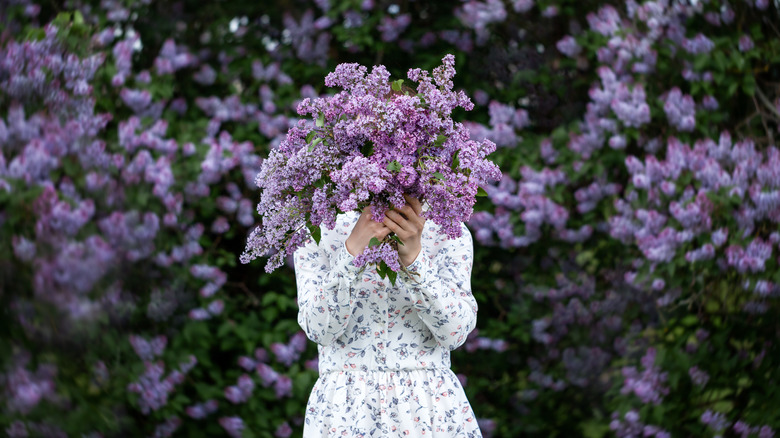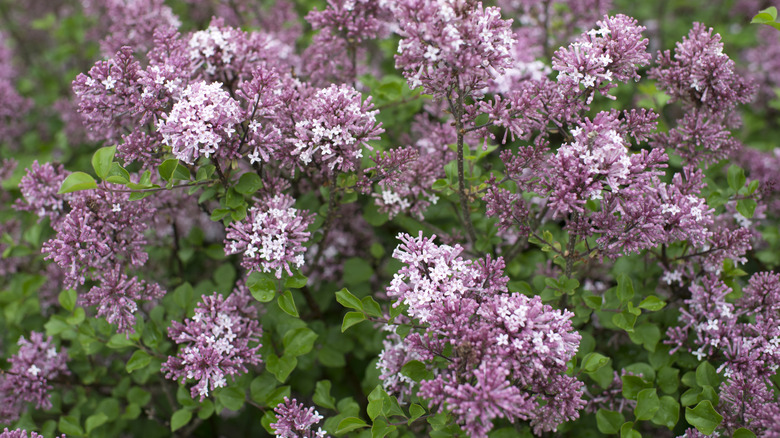The Fragrant Lilac Variety That Will Fill Your Yard With A Lovely Scent
Many people have cherished memories of time spent in their grandma or great-grandma's garden — beautiful, sunny days spent on the porch drinking lemonade, eating snap-peas right out of the shell, and catching the unmistakable scent of lilacs on the breeze. The aroma can trigger vivid memories. And one specific lilac cultivar, Syringa meyeri — also known as the Meyer lilac or Korean lilac — has the power to transport you right back to grandma's porch.
Lilacs have been grown in the U.S. since the colonial period. The oldest living lilacs in North America were thought to have been planted in 1750. Proving they have been a favored flower for gardens for quite a while, and for good reason. Lilacs offer a delightful scent that fills the air wherever they are planted, and their beautiful, delicate buds come in a variety of pinks, purples, and white.
The Meyer lilac was introduced into the United States from China by Frank Meyer in 1909. With its compact size and strong scent, it quickly gained popularity with gardeners. Being one of the most fragrant cultivars of lilacs, Meyer is the perfect flower to make your garden feel more sentimental and nostalgic. Its small lavender-colored blooms fill the air with a sweet perfume that attracts butterflies, hummingbirds, and maybe some fond memories of grandma's garden.
Tips for growing a Meyer lilac
Meyer lilacs are not only beautiful and fragrant, but surprisingly easy to grow, which makes them a better choice if you want to avoid many of the mistakes people make when growing lilacs. They are hardy and more resistant to powdery mildew than most lilac varieties. They thrive in USDA Hardiness Zones 3 through 7, which means they can handle colder winters and still come back strong in the spring. For optimal blooms you will want to plant them in well-drained soil where they will receive at least six hours of full sun.
Meyer lilacs are low maintenance, but you should still water them regularly (deeply once or twice a week) in the first year, until their roots are established. After their blooms fade in late spring, you will want to prune your lilac to ensure your fragrant plant stays healthy. If you have followed these tips, you should have a beautiful addition to your yard you can enjoy for many years.

